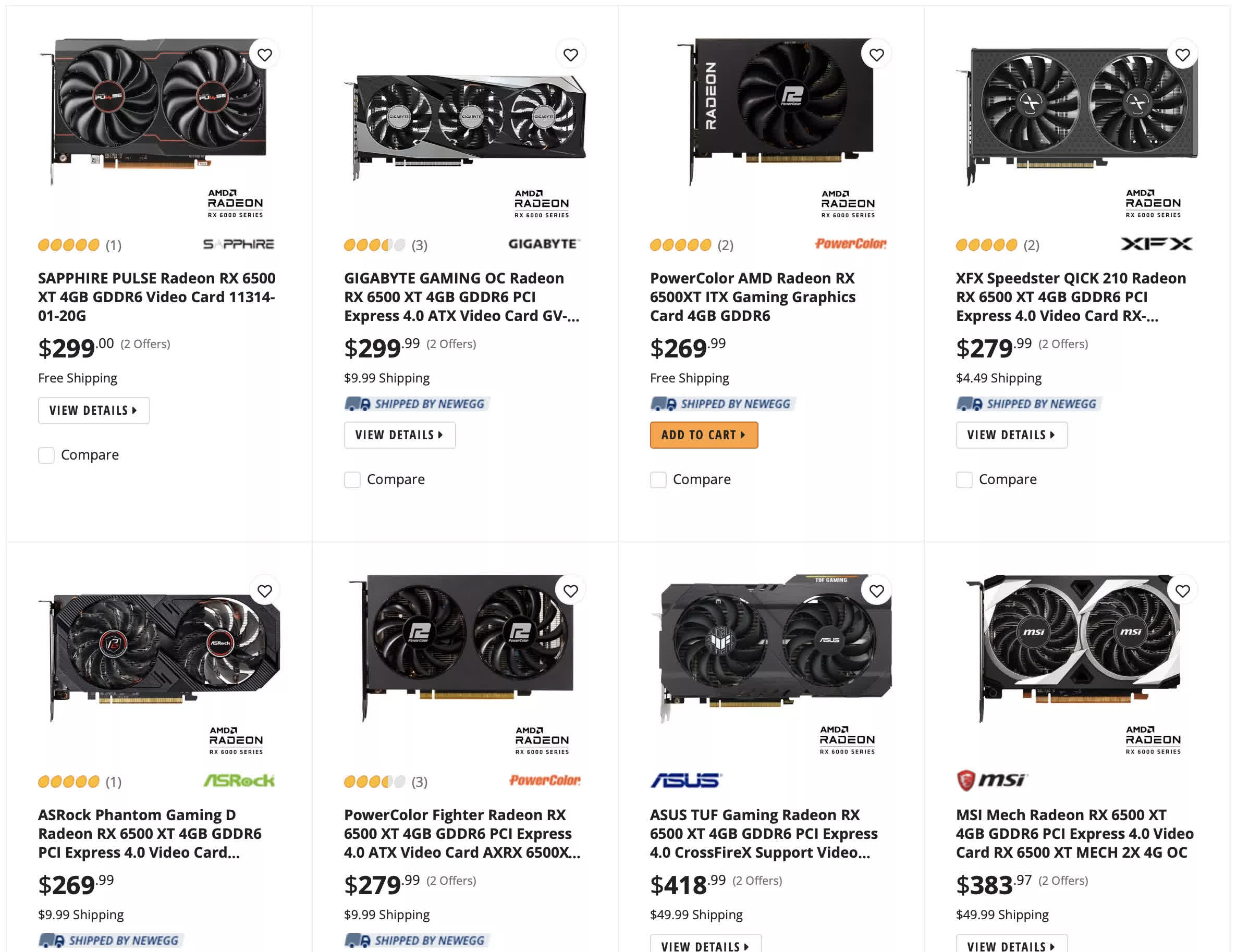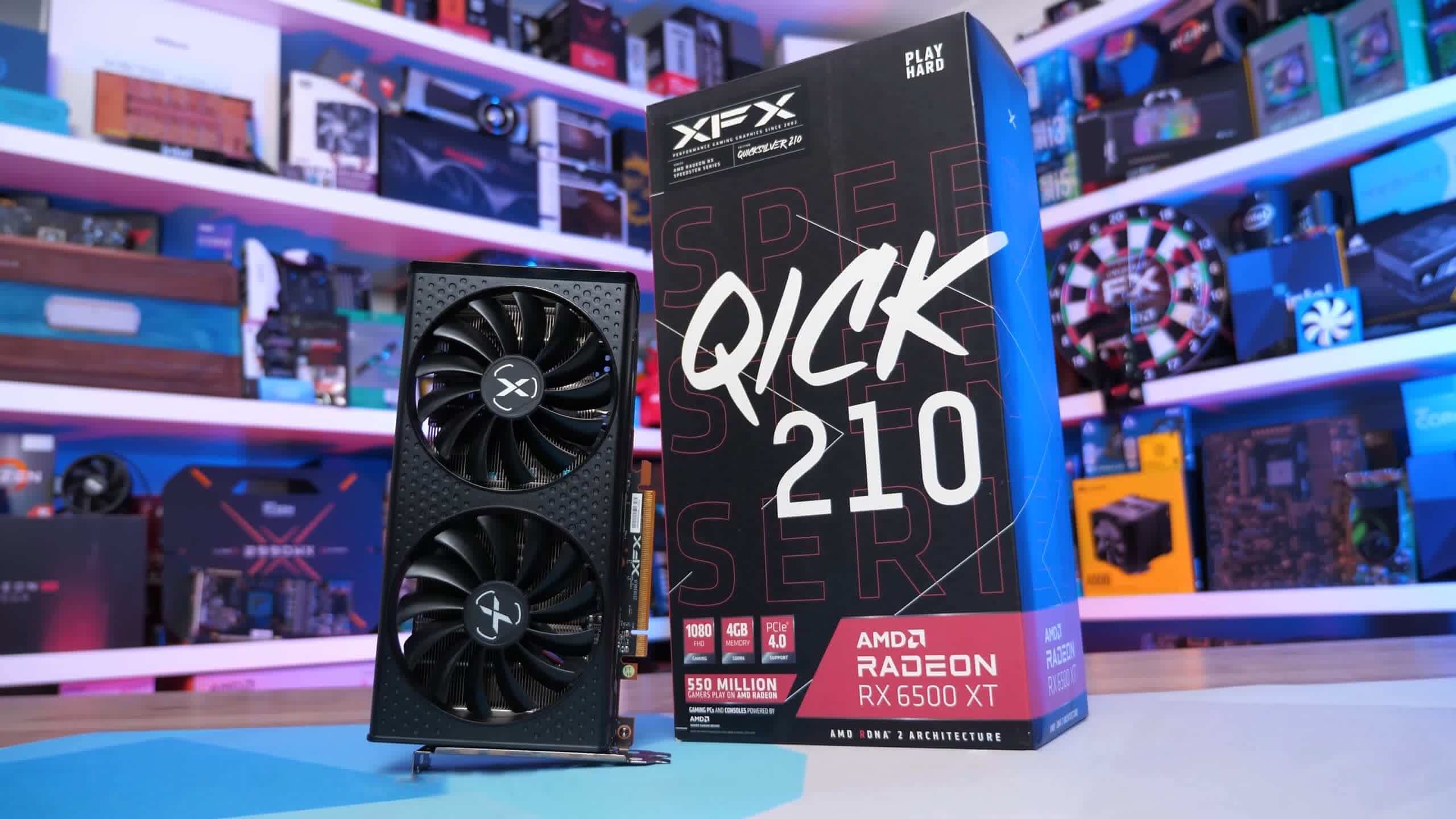Why it matters: The launch of Nvidia's RTX 3050 has been much more well-received than that of AMD's RX 6500 XT, as shown by the arguably more positive reviews. The latter card isn't flying off the shelves, so the Team Green offering has a good chance to steer gamers away --- if the price is right.
The AMD Radeon RX 6500 XT is a strange product that launched at the most inopportune time with a sticker price that doesn't even qualify it as a cash grab. Despite Team Red's good or bad motivations behind this deeply flawed graphics card release, its only achievement is that scalpers and cryptocurrency miners seem to have steered away from it.
Our own Steven Walton wrote a scathing review of the card, but his view is shared among other reviewers who also believe AMD has cut features and specifications too far. The RX 6500 XT was supposed to be an entry-level graphics card with enough power to deliver 1080p gaming at medium-high details without breaking the bank, but its technical limitations make it look bad even against the good old RX 580 --- a less energy-efficient but more capable product.

A week after launch, the RX 6500 XT can't be found at or near MSRP, which isn't a huge surprise. If we go by Newegg listings, the Asus TUF version is the most expensive at $418.99 while the PowerColor offers the most affordable model at "just" $269.99. That's a far cry from the $199.99 MSRP, and a ridiculous asking price for what is essentially a low end laptop GPU turned into a desktop graphics card that needs to be installed into a PCIe 4.0 slot to make it worthwhile.
Before the actual launch, AMD did promise to work closely with AIB partners to ensure a strong supply of the new cards. And since the Navi24 GPU is a relatively small chip measuring 107 sq. mm, the company can fit more of these into a wafer.
The biggest problem of the RX 6500 XT is that Nvidia's GeForce RTX 3050 is a better product in almost every way. Unlike AMD, Nvidia opted to use the more expensive GA106 silicon from the RTX 3060, paired it with double the amount of VRAM (8 gigabytes), and built it into a PCIe x8 card. It will likely be more expensive than the RX 6500 XT and may suffer from availability issues, but it's also not particularly attractive to miners. Time will tell which company played its cards right, as gamers will vote with their wallets.
